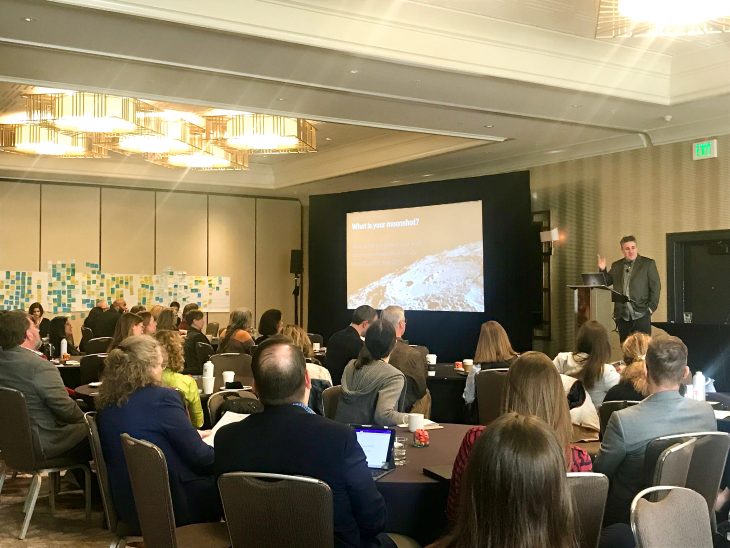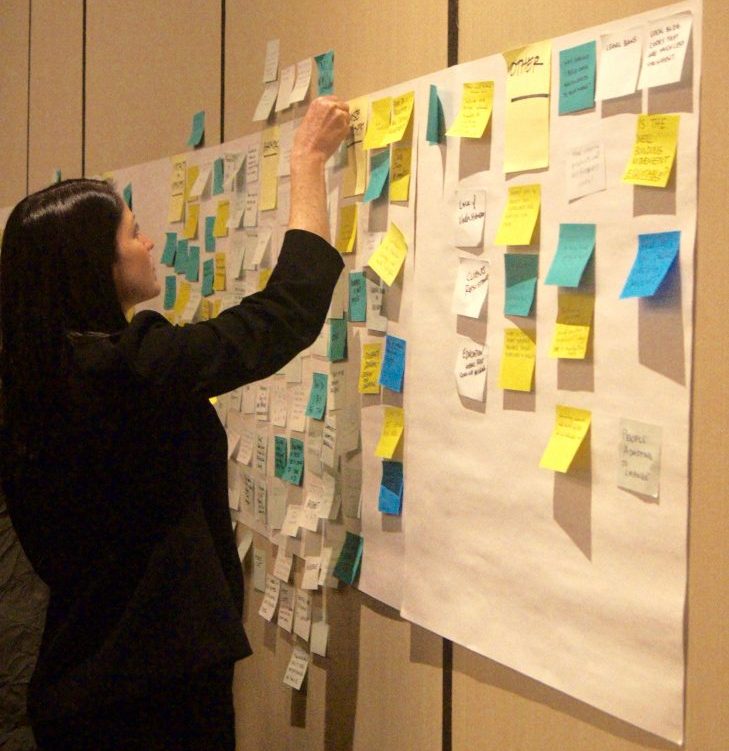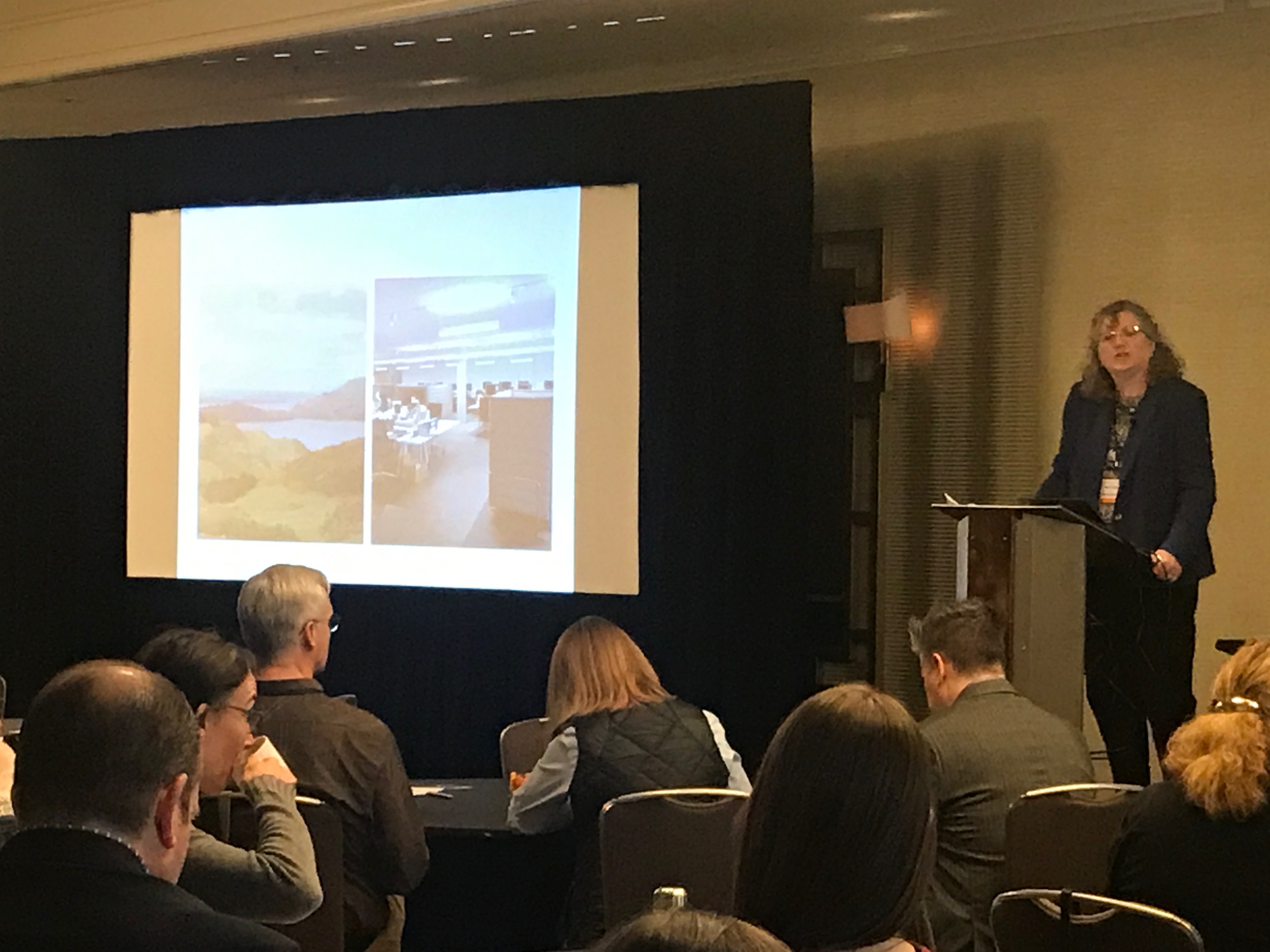In case you missed it and are suffering from a severe case of FOMO, here is a recap of the recent Design Well pre-conference and conference in San Diego, California that took place January 21-23, 2019.
Pre-Conference Workshop: Healthy Buildings and a Healthy Work-Life
Global Women for Wellbeing, a nonprofit founded two years ago by several women in the wellness and design industry, hosted a half-day hands-on workshop before the conference celebrating women leading in the design field. Participants included a mix of designers, workplace consultants, furniture dealers, and wellness experts hailing from as far as the Dominican Republic to Alaska.
The workshop was an opportunity for participants to share how health and wellbeing concerns are affecting work for clients as well as their personal life. Presentations and exercises addressed the “Superwoman Syndrome” (tendency for women to put pressure on themselves to be perfect in all aspects of their life, with little to no attention to self-care), and “The Power of Design and Diversity,” exploring the need for meaningful diversity in the industry. Just a few of the many juicy research articles referenced during the discussion are listed below:
- “A Next Step in Architecture’s #MeToo Movement: The Architecture Lobby’s Solidarity Bloc offers more than just solidarity. It offers the chance for a new job.”
- “Caregiving, Leadership and Financial Wellbeing: Connecting the Issues that Hold Women Back” GW4W whitepaper
- “Where are all the female architects?” New York Times
- “Diversity: The Business Advantage Best Practices for Gender Equity and Inclusion in Commercial Real Estate” CREW
- “Companies with Diverse Executive Teams Posted Bigger Profit Margins, Study Shows” Wall Street Journal
- “Early Benchmarks Show ‘Post-Millennials’ on Track to Be Most Diverse, Best-Educated Generation Yet” Pew Research Center
- “Diversity and Inclusion: The New Approach Needed to Avoid Cultural Irrelevance,” Design Intelligence
- Test your own biases with Harvard’s Project Implicit: Social Attitudes
“I really enjoyed the exercise of working in teams to discuss strategies to reduce stress. It initiated some great dialogue and also helped us realize that we are not alone in feeling pressured to do it all! We have the ability to redefine what it means to be ‘superwomen’ in our industry.”
-Lorraine Jack, Seattle, WA – Project Architect/Interior Designer
“It focused on the power of women, how to be healthy and balancing life roles from a women’s perspective. It was an experience listening to all these wonderful women and their stories of success, kids, and work.”
-Kathylka Gonzalez, Dominican Republic – Healthcare and Wellness Architect
Design Well Conference: Themes and Take-aways
Presentations covered a wide range of topics including the current and growing health crisis, the market opportunity for buildings and design, biophilia, environmental psychology, healthy building certification updates, manufacturer labeling and many, many case studies!
Things you are strongly encouraged to check out:
- The XPRIZE for Healthy Buildings is a challenge to design teams to “grow a wall.” That’s right, you heard us. Hear from Eric Corey Freed and this amazing competition.
- Sally Augustin’s new book is Designology: How to Find Your PlaceType and Align Your Life With Design, written for designers AND their clients.
- Mindful Materials is a one stop shop to classifying the health and environmental impacts of products from leading manufacturers.
- MaterialsCAN is the Carbon Action Network that drives awareness to better understanding the importance of embodied carbon of specified materials.
- WELL v2 is out of pilot stage! Time to integrate into your projects.
- The American Society of Interior Design (ASID) headquarters, the first WELL and LEED Platinum Certified space, has plenty of juicy metrics and stories. Check out their research findings.
- Consider the neuro-diversity of our workforce and how to best accommodate those with Dyspraxia, Dyslexia, Attention Deficit Hyperactivity Disorder (ADHD), Dyscalculia, Autistic Spectrum, Tourette Syndrome or other unique conditions. Kay Sargent reminded us of the size of this group and some of the ways to make this demographic more comfortable and effective in the workplace.
Conference participants were asked three questions:
- What are pressing questions about design and health your clients have today?
- When it comes to health and design, what would you would like to know more about to deepen your expertise?
- What are the biggest barriers to integrating health and wellbeing into your work?
In general, the most common questions asked by clients were about specific design strategies to improve health and wellbeing and the cost of adopting these strategies. Participants said they personally wanted to know more about detailed design strategies, research and metrics.
When it came to barriers, there were many. In addition to cost and the need for a good business case, specific barriers included:
- Perceived cost (even if actual cost was less!)
- Need for better metrics to define what is better for health and why
- Time and capacity on project to research and specify healthy and sustainable products
- Resistance to change including design team and client
- Lack of client interest – for many it’s a lower priority
- Silos and bureaucracy within project team and client teams
- Clear communication with clients about the pro and cons of adopting healthy strategies
- Existing building constraints
As part of this process, many questions were asked generally by participants, like:
- Is this trend going to last? (Boy, we hope so!)
- How can I measure specific benefits to human condition?
- How can I get clients to stop obsessing about ROI?
- How can I better accommodate ADHD, children’s health for K-12 facilities, etc.?
- Is the well building movement equitable? Could it be more so?
- What happens when we move or grow after we’ve made healthy investments in our buildings?
- How do I motivate people to “begin”?
- What can healthy design do to impact attraction and retention?
A special thanks to the corporate sponsors of this event, the many speakers and all of those who attended. It’s a big deal to commit to a conference that is a “first” of any kind. You all are on the leading edge and deserve a big pat on the back for advancing our industry. Onward and upward!
“[This conference] was inspirational in terms of the amount of commitment from leading organizations and people in the marketplace.”
-Josh Jacobs, Atlanta, GA – UL Environmental Codes and Standards
“The conference was something completely new and unique – something I’d been waiting for ever since WELL was released. This topic is extremely relevant to the ever-evolving healthcare industry. Wellness is here. People recognize it, and as a designer we need to be stewards of the people we shelter.”
-Clairanne Pesce, Washington, D.C. – Array Architects
“The Q&A was more like an extended discussion of the presentation and the viewpoints of those in the audience were just as informative as the speaker. I think this has a lot to do with the type of group that was there and how relatively small it was compared to other conferences; it is the engagement piece that was super valuable and I truly appreciated it as an attendee.”
-Marissa Mitzner, Washington, D.C. – Healthy Buildings






